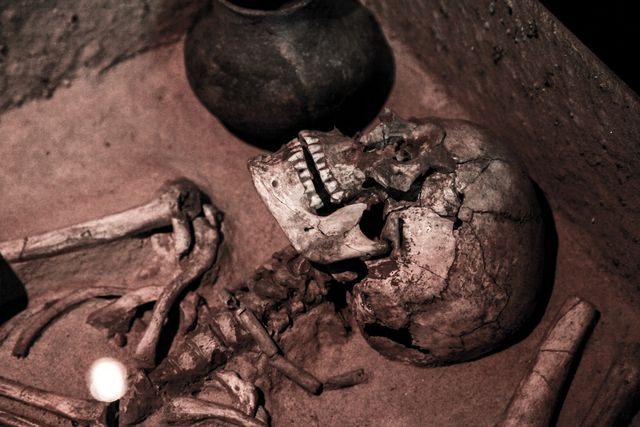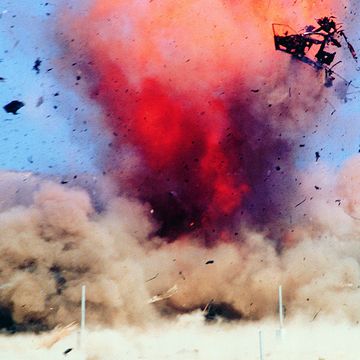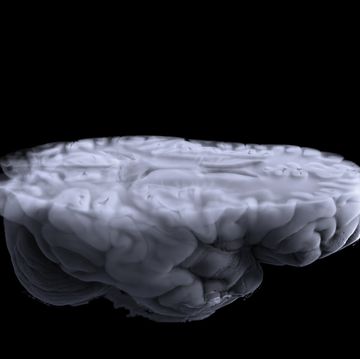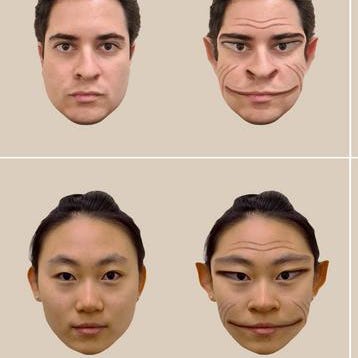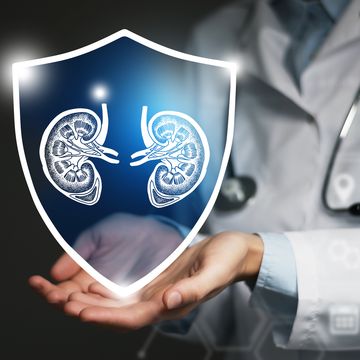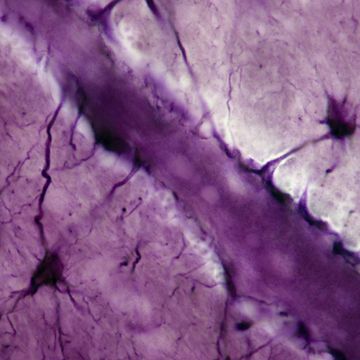- Scientists in Australia have allegedly captured video evidence of post-mortem movement in a decomposing body.
- Researchers suggest in an interview with the Australian Broadcasting Corporation that contracting ligaments may be responsible for the arm movement.
- Body donation facilities—or body farms—provide forensic scientists with an unrivaled opportunity to study the decomposition of human remains in natural environments.
Our bodies undergo strange changes after we die. But this may be the strangest: Scientists say they've captured footage of a decomposing body moving in its grave.
Forensic science student Alyson Wilson and her colleagues filmed the decomposition of a donor body for 30-minute intervals over the course of 17 months at the Australian Facility for Taphonomic Experimental Research (AFTER) in New South Wales.
"What we found was that the arms were significantly moving, so that arms that started off down beside the body ended up out to the side of the body," Wilson told the Australian Broadcasting Corporation (ABC). "One arm went out and then came back in to nearly touching the side of the body again."
Wilson believes the movement could have occurred as ligaments contracted throughout the decomposition process. Researchers have previously documented that rafts of maggots and curious critters can contribute to post-mortem movement.
"Fly and beetle larvae are quite active during certain stages of decomposition and can move smaller parts of the body," forensic taphonomist Shari Forbes of the International Centre for Comparative Criminology, who ran the AFTER lab from 2016 to 2018, tells Popular Mechanics.
“Early on, it gets rigor mortis and is very stiff, and then it relaxes,” forensic anthropologist Lori Baker of Baylor University tells Popular Mechanics. "You also have bloating that occurs as gases from the intestines are no longer contained and decomposition begins.” This, she suggests, could also contribute to movement in a decomposing body.
It’s important to note that this latest research has not yet been published in a peer-reviewed journal, and the finer details of the study have not yet been released. Previous work Wilson published in the journal Forensic Science International: Synergy also focused on the use of time-lapse photography to analyze body decomposition. Popular Mechanics has reached out to the authors for comment and will update the story as needed.
“I don’t think it would be the first time it has been captured on film as the human decomposition facilities in the USA have been filming their research for years and would have likely observed something similar,” Forbes says. But “this information certainly helps investigators to better understand the positioning of decomposed remains at crime scenes.”
Body donation facilities—or body farms, as they’re colloquially called—play an important role in helping forensic scientists understand how the human body evolves after death in a variety of different climatic and soil conditions and at different altitudes.
The first body farm in the U.S., run by the University of Tennessee, Knoxville, opened in 1981 and helps scientists better understand decomposition in hot, humid regions. A body donation facility near Colorado Mesa University, which sits just under 5,000 feet above sea level near Grand Junction, helps researchers study decomposition in an arid environment.
"It's so environment-specific," Richard L. Jantz, Professor Emeritus and Director of the Forensic Anthropology Center at the University of Tennessee tells The Atlantic. Bodies take longer to decompose in cold weather rather than hot, humid, and sunny environments. Other environmental factors also play a role, per The Atlantic; remains laid on the surface or buried in moist, acidic soils are susceptible to faster rates of decomposition.
These facilities help scientists understand the myriad of changes our bodies undergo after we die. Immediately after death, the body cools and stiffens, while circulating blood begins to pool at the bottom of the cadaver. Decomposition on a microscopic level occurs quickly, as the body’s cells break down.
Then things get goopy as microbes, like bacteria and fungi and protozoa, begin to break down tissue through a process called putrefaction. Bloating occurs, and finally, as the corpse enters the final stages of decomposition, flesh deteriorates and bones become exposed.
Based on these latest findings, we definitely need more research to understand how our bodies cope with decomposition after we die.
Correction: A previous version of the article inaccurately stated that California University in Pennsylvania operates a body decomposition facility. We regret the error.
Jennifer Leman is a science journalist and senior features editor at Popular Mechanics, Runner's World, and Bicycling. A graduate of the Science Communication Program at UC Santa Cruz, her work has appeared in The Atlantic, Scientific American, Science News and Nature. Her favorite stories illuminate Earth's many wonders and hazards.
